
-
Encontre a comida certa para o seu animal de estimaçãoResponda a este questionário para descobrir qual é a melhor comida para o seu amigo peludo.Encontre a comida certa para o seu animal de estimaçãoResponda a este questionário para descobrir qual é a melhor comida para o seu amigo peludo.Produtos em destaque
 Peso Perfeito Small & Mini para Cães Adultos
Peso Perfeito Small & Mini para Cães AdultosA ração super premium seca para cães Hill's Science Diet Perfect Weight Small & Mini é um alimento completo indicado para a perda e manutenção de peso de cães adultos de raças pequenas e mini até 11 kg.
Compre agora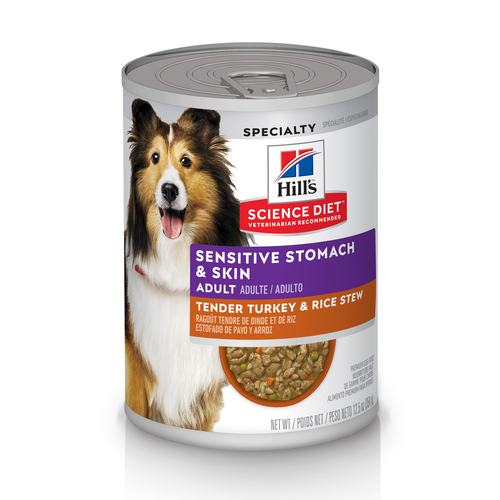 Pele Sensível para Cães Adultos - Alimento Úmido
Pele Sensível para Cães Adultos - Alimento ÚmidoHill’s Science Diet Sensitive Stomach & Skin é uma ração super premium úmida, indicada para a manutenção de cães adultos; fornece nutrição para saúde digestiva e da pele.
Compre agora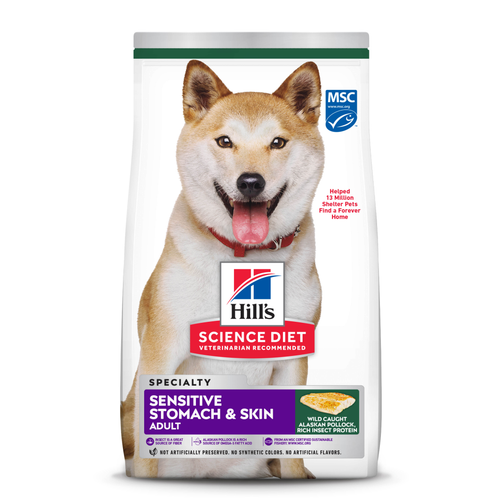 Pele Sensível para Cães Adultos com proteína sustentável
Pele Sensível para Cães Adultos com proteína sustentávelHill’s Science Diet Sensitive Stomach & Skin é uma ração super premium seca, suave para o estômago enquanto nutre a pele e promove uma bela pelagem, indicado para a manutenção de cães adultos.
Compre agoraProdutos em destaque Cuidado Urinário e Controle de Bolas de Pelo para Gatos Adultos
Cuidado Urinário e Controle de Bolas de Pelo para Gatos AdultosHill's Science Diet Urinary Hairball Control é uma ração super premium indicada para gatos adultos para apoiar a saúde de todo o sistema urinário e ajudar a evitar a formação de bolas de pelo.
Compre agora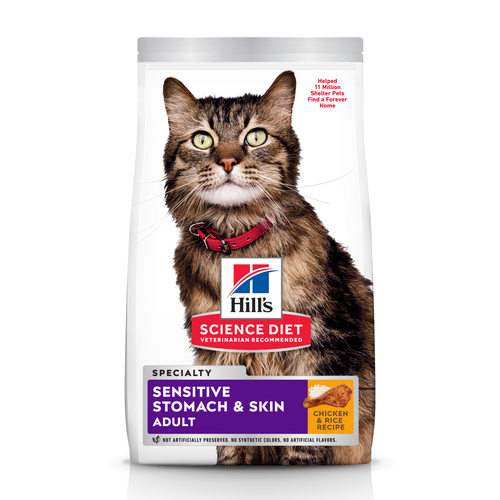 Pele Sensível para Gatos Adultos
Pele Sensível para Gatos AdultosHill’s Science Diet Sensitive Stomach & Skin é uma ração super premium seca, suave para o estômago enquanto nutre a pele e promove uma bela pelagem, indicado para a manutenção de gatos adultos.
Compre agora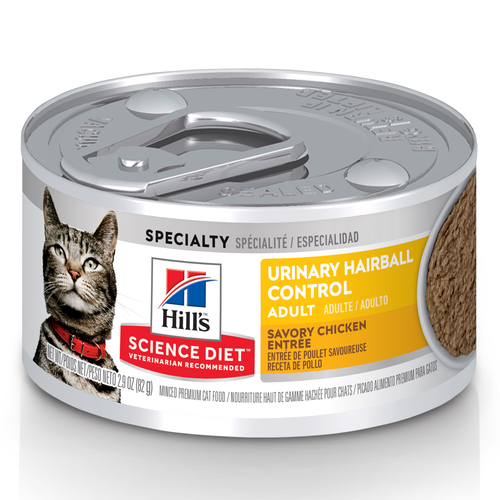 Cuidado Urinário e Controle de Bolas de Pelo para Gatos Adultos - Alimento Úmido
Cuidado Urinário e Controle de Bolas de Pelo para Gatos Adultos - Alimento ÚmidoHill's Science Diet Urinary Hairball Control é uma ração super premium indicada para gatos adultos para apoiar a saúde de todo o sistema urinário e ajudar a evitar a formação de bolas de pelo.
Compre agora -
Cão
- Dicas e artigos para cães
-
Categoria Saúde Canina
- Peso
- Sensibilidades Alimentares e Ambientais
- Urinário
- Digestivo
- Articulação
- Rim
-
Estágio de vida do cão
- Nutrição do filhote
- Nutrição de adultos
- Nutrição Sênior
Gatos- Dicas e artigos para gatos
-
Categoria Saúde do Gato
- Peso
- Sensibilidades da pele e alimentos
- Urinário
- Digestivo
- Rim
-
Estágio de vida do gato
- Nutrição para filhotes
- Nutrição de adultos
Artigos em destaque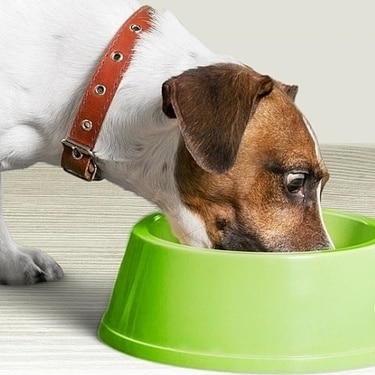 A Dieta Certa para o Seu Animal de Estimação
A Dieta Certa para o Seu Animal de EstimaçãoSeu animal de estimação lhe dá amor incondicional todos os dias. Como você retribui esse carinho? Muitas vezes é apenas o tempo que você passa com ele - brincar, passear ou abraçar o seu bebê peludo que contribui para desenvolver um laço indissolúvel entre vocês dois.
Leia Mais Entenda a Saúde Intestinal do Seu Animal
Entenda a Saúde Intestinal do Seu AnimalAprenda o que é o microbioma de um animal de estimação, como ele contribui para o intestino e a saúde geral do animal e por que a nutrição é importante para a manutenção de microbiomas saudáveis.
Leia Mais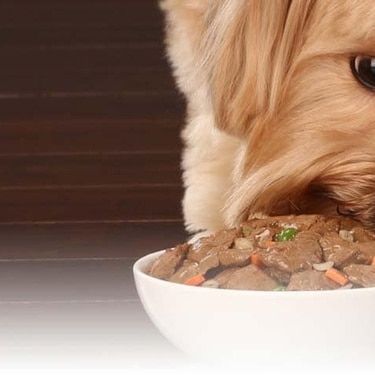 Dicas para Armazenar a Ração dos Animais de Estimação
Dicas para Armazenar a Ração dos Animais de EstimaçãoO lugar onde você guarda a ração do seu gato e do seu cão pode fazer uma grande diferença na qualidade e frescor depois de aberta. Aqui estão algumas perguntas comuns e recomendações para o armazenamento ideal de todas as rações secas e enlatadas da Hill’s para cães ou gatos.
Leia Mais -


You love your cat, there's no doubt about that. But hairballs in cats? Not so much. Take some comfort in the fact that you're not alone in your fight against dreaded cat hairballs. In fact, a Hill's study showed the top condition–reported by 35 percent of cat parents–was hairballs. Here are some answers on how to reduce those cringe-worthy piles of hair.
What Are Hairballs?
Normally, hair ingested by your cat passes through her intestinal tract and is expelled in the litter box. But when the hair accumulates in the stomach or esophagus and isn't digested, she gets rid of the hair by vomiting it up. The form differs from cat to cat, but most frequently hairballs are cylindrical in shape due to their trip up the narrow esophagus.
It's not uncommon for a cat to vomit a hairball every week or two, according to Richard Goldstein, DVM, an associate professor of small animal medicine at Cornell University's College of Veterinary Medicine. Hairballs in cats are generally about an inch long, but can be as long as five inches and an inch thick. These little gifts that she leaves you will have a hue that almost matches her fur, but slightly darker in color because of her food and other gastric secretions from her digestive system.
Every cat seems to have their own style when it comes to hairballs; some cats will make loud crying noises almost as a warning of what she's about to do, while others are a bit stealthier before they vomit it up. But the common telltale sign that your cat is about to spit up a hairball is a loud retching and hacking noise.
Why Is My Cat Eating Hair?
Don't worry, your kitty doesn't see her coat as a midday snack. Cats ingest hair as they are self-groomers, which means they keep themselves clean by licking themselves. You may already know if you've been the recipient of a cat's fond kisses, their tongues are quite rough. That roughness gives your fastidious pet a way to remove the dirt, debris, and loose hair from her coat, allowing her to remain sleek and clean without human help (unlike most dogs, for instance). Unfortunately, however, cats are unable to digest their hair. That is why hairballs have to be excreted one way or the other.
Are Some Cats More Likely to Get Hairballs Than Others?
Long-haired cats, such as Persians and Maine Coons, are more susceptible to hairballs simply because they have more hair than their short-haired friends. Hairballs may be more common when the weather warms, too, as all cats tend to shed their heavier winter coats. Some cats just naturally groom more often than others as well, which makes them more likely to suffer hairballs.


Dicas Saborosas
Os gatinhos podem precisar de várias consultas de vacinação no primeiro ano de vida. Gatos adultos geralmente se beneficiam de consultas anuais, enquanto gatos idosos ou com necessidades especiais podem exigir consultas mais frequentes.
Are Hairballs in Cats a Health Issue?
It depends. Hairballs in cats are a natural–albeit not fun–way for a cat to rid herself of hair that gets stuck in her stomach and are normal on occasion. But if they occur frequently or if you see or hear your cat retching, vomiting, or coughing without the eventual appearance of a hairball, you should talk to your veterinarian. Other signs that hairballs might be a health issue you should discuss with your vet include constipation, an extraordinary amount of hair in stools, a loss of appetite, and lethargy. Additionally, if you start to see the number of hairballs increase, or you see your cat grooming more often than usual, it might be a sign of a larger skin condition that you should speak to your vet about.
If your cat is having trouble with hairballs, your vet might want to do blood tests to make sure your cat's liver and kidneys are performing as they should. The vet might also recommend an ultrasound or take x-rays to make sure there are no blockages that could harm your cat. Vet Jeff Johansson, writing for Asheville Veterinary Specialists, details how a cat brought in with an elevated respiratory rate, loss of appetite, and increased salivation was suffering from a hairball firmly lodged in his esophagus, which was only discovered after x-rays. Johansson and his team were able to push the hairball back into the stomach, where it eventually passed naturally. In less severe cases, a laxative might work to pass the hairball, but laxatives should only be administered under the direction of a vet. In more severe cases, surgery might be the only way to remove a particularly stubborn mass of hair.
How Can You Manage & Prevent Hairballs?
There are three ways you can help minimize hairballs in your cat. First, you should groom your cat to reduce shedding. Regular brushing sessions will keep your cat from ingesting loose hair through self-grooming. Your brushing won't keep your cat from self-grooming, but will reduce the amount of hair she ingests. Grooming sessions with you also have the added benefit of being a bonding activity with your furry friend!
Second, there are products on the market such as shampoo and wet wipes that claim to prevent hairballs by controlling shedding. As with any product, however, check with your vet before you begin a regular regime to make sure it's well-suited for your kitty.
Last–but certainly not least!–know that food choice is very important in reducing hairballs. A hairball control cat food includes added natural fiber amongst its balanced nutrition to help move hair naturally through your cat's digestive system while also nourishing your cat's skin and coat to reduce shedding. Hill's® Science Diet® includes the following choices for cats with hairball issues:
- Science Diet® Adult Hairball Control. For cats ages 1 to 6.
- Science Diet® Adult Hairball Control Light. For cats ages 1 to 6 that struggle to maintain an optimal weight.
- Science Diet® Adult Hairball Control Savory Chicken Entré or Science Diet® Ocean Fish Entré. Two canned food choices for kitties who prefer canned food or who are on a blended wet-dry food routine.
- Science Diet® Adult 7+ Hairball Control. For older cats who struggle with hairballs.
- Science Diet® Adult Urinary Hairball Control. Supports the health of the whole urinary system.
- Science Diet® Adult Urinary Hairball Control Cat Food. A canned food version that, like the dry version, supports the health of the whole urinary system.
Your cat–and you–don't have to suffer from frequent hairballs. By brushing your cat and choosing to feed her a high-quality food that will keep her coat healthy while also keeping the hair moving naturally through her digestive system, you can say goodbye to hairballs.


Kara Murphy é uma escritora freelancer e dona de animal de estimação que mora em Erie, Pensilvânia. Ela tem uma goldendoodle chamada Maddie.
Produtos relacionados
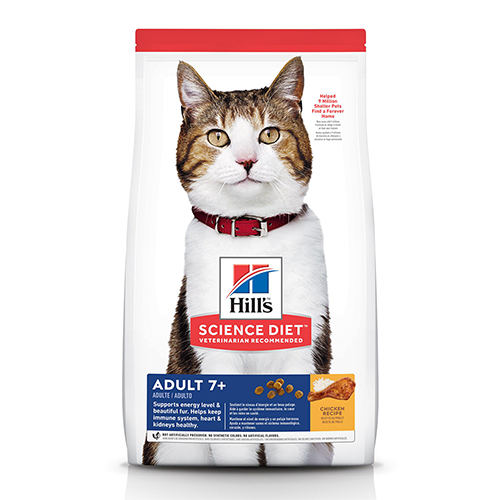
Suporta nível de energia e pele saudável. Ajuda a manter o sistema imunológico, o coração e os rins saudáveis.

Hill's Science Diet Urinary Hairball Control é uma ração super premium indicada para gatos adultos para apoiar a saúde de todo o sistema urinário e ajudar a evitar a formação de bolas de pelo.

Hill's Science Diet Urinary Hairball Control é uma ração super premium indicada para gatos adultos para apoiar a saúde de todo o sistema urinário e ajudar a evitar a formação de bolas de pelo.

Hill’s Science Diet Sensitive Stomach & Skin é uma ração super premium seca, suave para o estômago enquanto nutre a pele e promove uma bela pelagem, indicado para a manutenção de gatos adultos.
Artigos relacionados
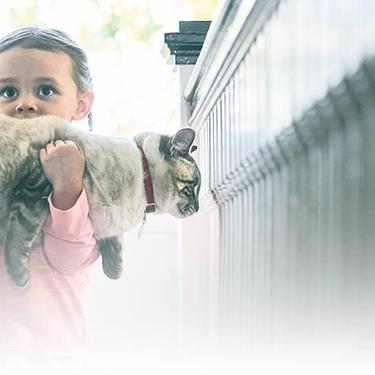
Cats with sensitive skin have special needs and even healthy cats can sometimes develop poor skin health. Learn more about sensitive skin symptoms in your cat, what you can do to help your pet feel more comfortable and get recommendations on sensitive skin cat food.
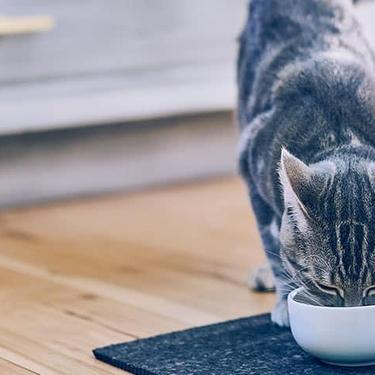
Assim como em seres humanos, os gatos podem apresentar transtornos gástricos. Se o seu gato está com os sintomas abaixo, especialmente após se alimentar, talvez ele tenha um estômago sensível.
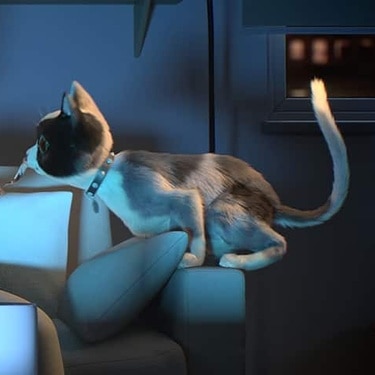
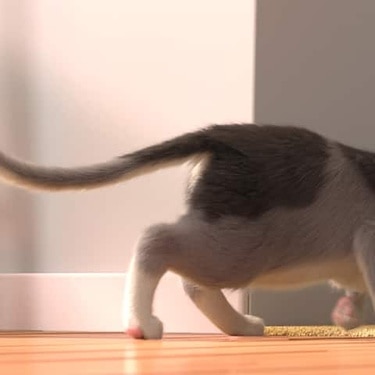
Os nossos gatos estão ficando mais gordinhos, segundo Kerri Marshall, médica veterinária e vice-presidente executiva de experiência do cliente da Trupanion - empresa que oferece e administra seguros para cães e gatos nos EUA, Canadá e Porto Rico.
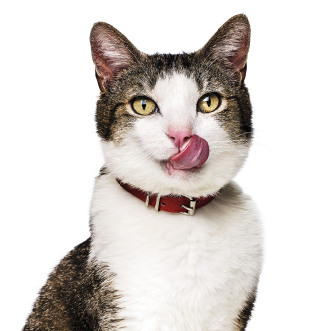
Coloque seu gato em dieta sem que ele saiba
Nossa fórmula de baixa caloria ajuda você a controlar o peso do seu gato. Ela é rica em proteínas de alta qualidade para a construção de massa muscular e elaborada com ingredientes específicos para uma refeição saborosa e nutritiva. Antioxidantes clinicamente comprovados, como vitamina C+E, ajudam a promover um sistema imunológico saudável.
Coloque seu gato em dieta sem que ele saiba
Nossa fórmula de baixa caloria ajuda você a controlar o peso do seu gato. Ela é rica em proteínas de alta qualidade para a construção de massa muscular e elaborada com ingredientes específicos para uma refeição saborosa e nutritiva. Antioxidantes clinicamente comprovados, como vitamina C+E, ajudam a promover um sistema imunológico saudável.

